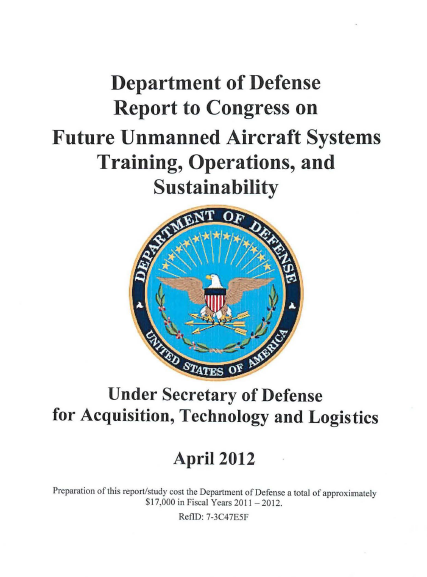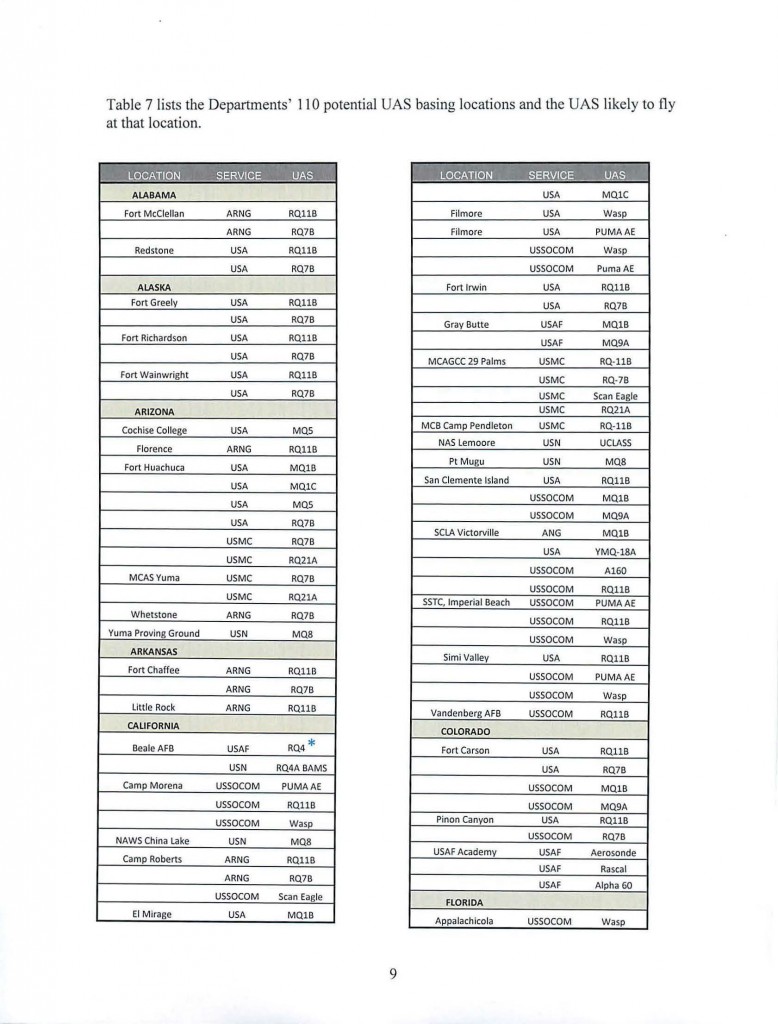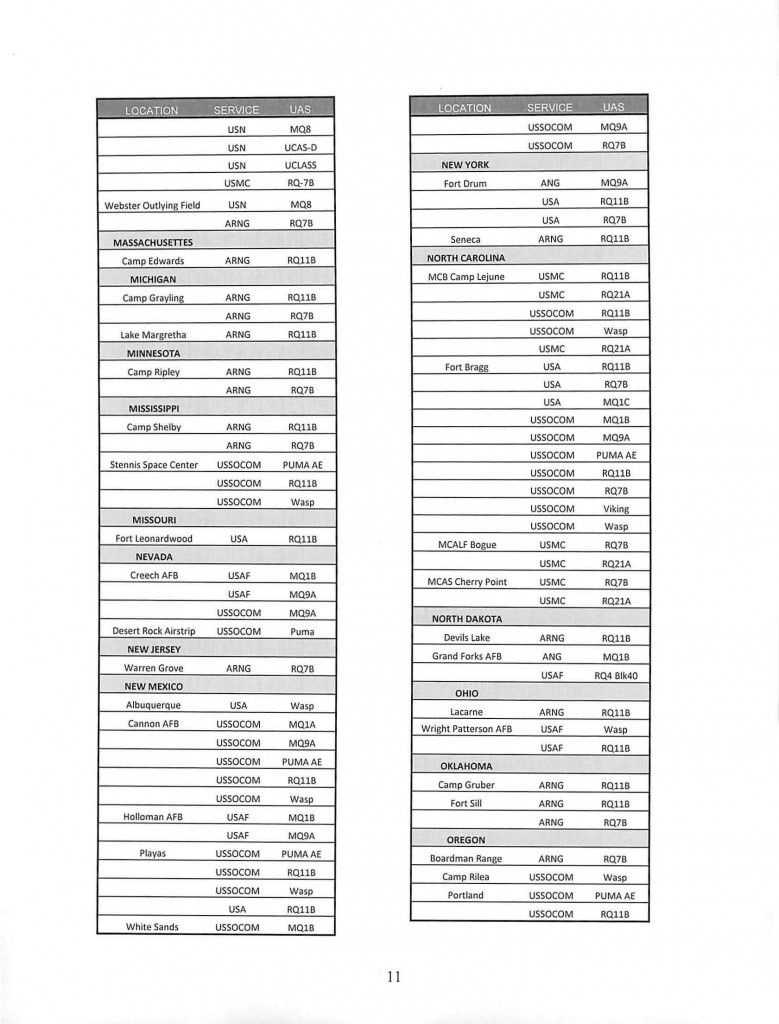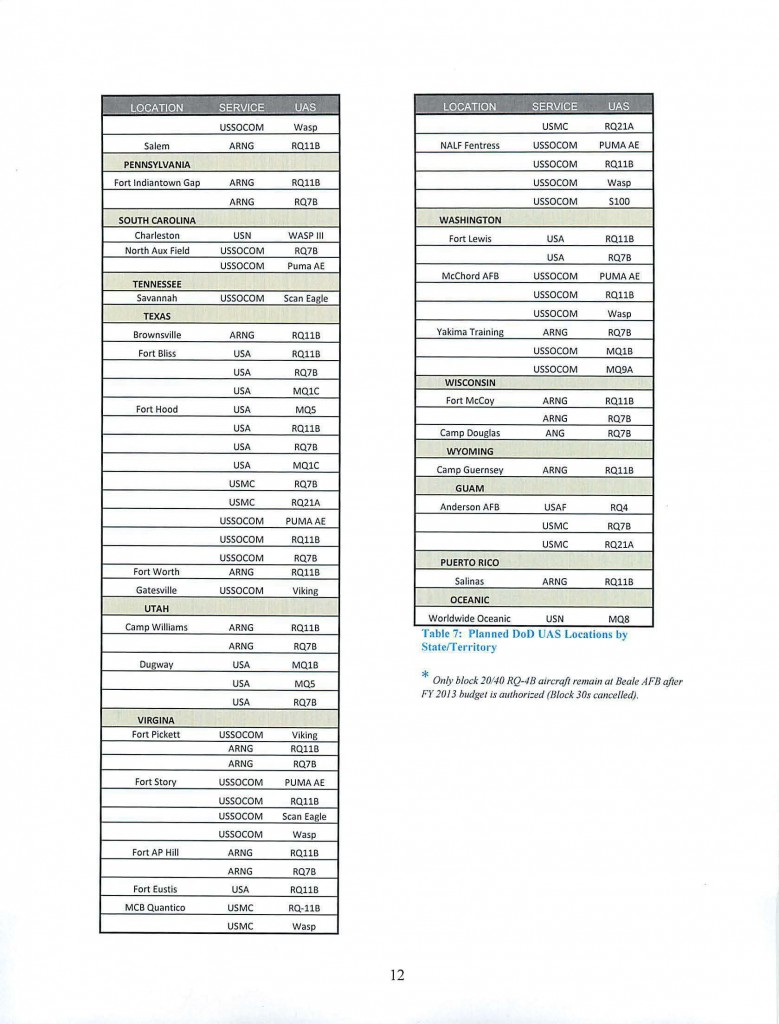The following report was originally obtained and published by InsideDefense.com.
Department of Defense Report to Congress on Future Unmanned Aircraft Systems Training, Operations, and Sustainability
- 30 pages
- April 2012
- 4.49 MB
The Department of Defense (DoD) continues to increase its investment in unmanned aircraft systems (UAS) to meet battlefield commanders’ demand for their unique capabilities. The emphasis on long-endurance, unmanned intelligence, surveillance and reconnaissance (ISR) assets -many with strike capabilities – is a direct reflection of recent operational experience and further Combatant Commander demands. This increase in demand has resulted in a large number of UAS capable of a wide range of missions. This large number of fielded UAS has also driven a strong demand for access within the National Airspace System (NAS). This need for airspace access to test new systems, train operators, and conduct continental United States (CONUS)-based missions has quickly exceeded the current airspace available for military operations. The situation will only be exacerbated as units return from overseas contingencies.
Currently, DoD UAS operations conducted outside of Restricted, Warning, and Prohibited areas are authorized under a temporary Certificate of Waiver or Authorization (COA) or waiver from the Federal Aviation Administration (FAA) or under limited conditions outlined in the 2007 DoD-FAA Memorandum of Agreement (MoA). DoD is actively engaged in coordinating efforts on behalf of the Military Departments and Combatant Commands to shorten and simplify the FAA COA process to allow greater unmanned access to the NAS, with direct engagement through the interagency UAS Executive Committee (Ex Com). The UAS Ex Com is a joint committee composed of senior executives from four member organizations: DoD, FAA, the Department of Homeland Security (DHS), and the National Aeronautics and Space Administration (NASA). The mission of the UAS ExCom is to enable increased and ultimately routine access of Federal UAS engaged in public aircraft operations into the NAS to support operational, training, development, and research requirements off AA, DoD, DHS, and NASA. DoD is also pursuing ground-based and airborne sense-and-avoid efforts to eventually supplant or significantly reduce the need for CO As. In the future, DoD will continue to utilize Restricted, Warning, and Prohibited areas but will also continue to develop the necessary technologies to access other airspace safely and in accordance with applicable federal aviation regulations.
This document outlines planned force capability growth and forecasted attrition of UAS aircraft through FY 2017; Military Department personnel required for training and operations; personnel and aircraft basing intentions; and required military construction (MILCON) and airspace requirements for bases hosting UAS. Within the report, the Military Departments provide current and planned inventories, personnel requirements to operate and maintain the systems, planned bases and operating locations, and progress with facilities to support inventories. Also, the report addresses the airspace integration challenge through implementation of the DoD Airspace Integration Plan, multi-agency collaboration, and ongoing negotiations with FAA. The Military Departments have a cohesive plan to address basing, funding, and manning in support of forecasted training and operations.
…





